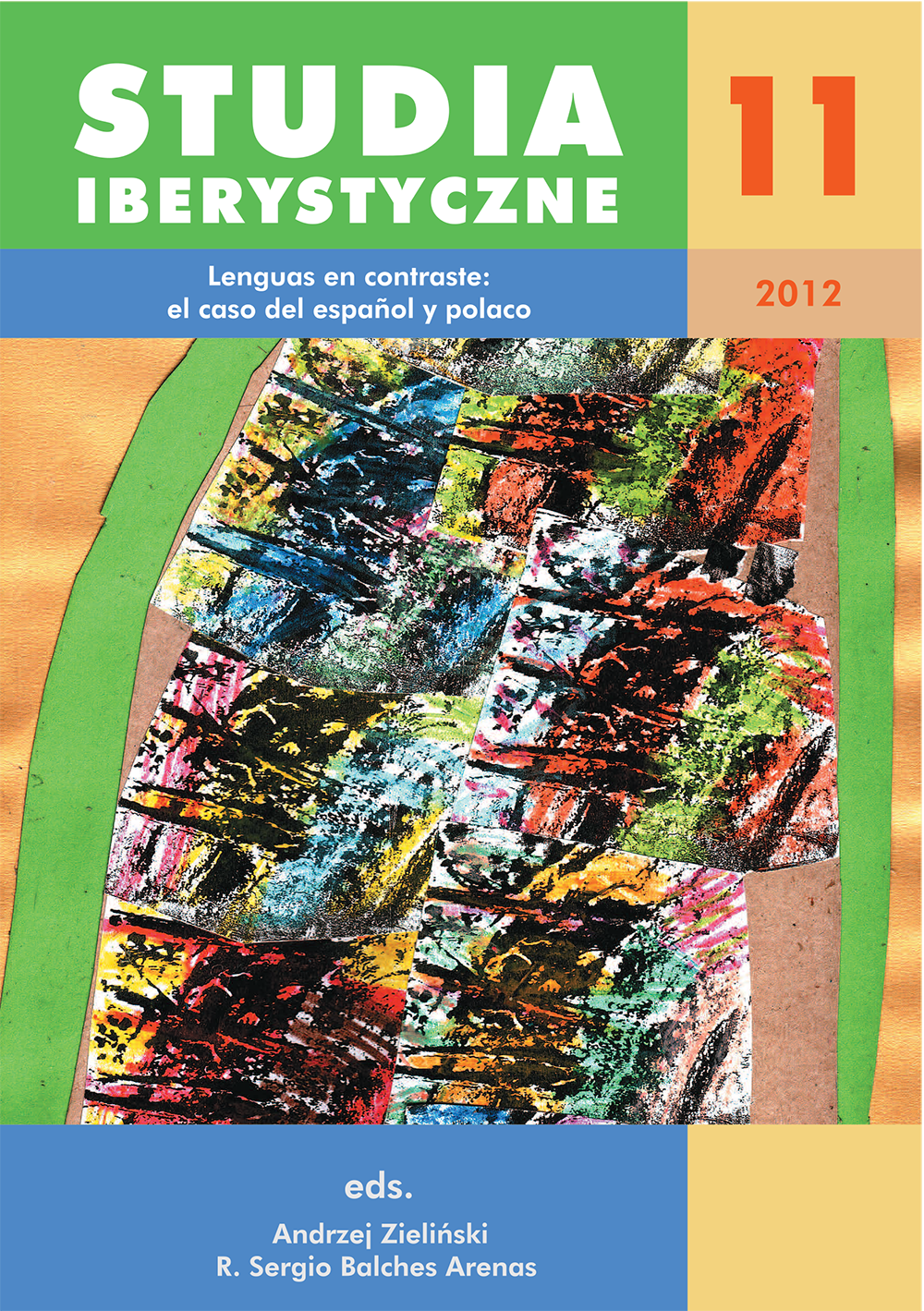Sobre algunos nexos subordinantes en español y en polaco: tipos de estructuras que enlazan y diferenciaciones entre el registro escrito y el hablado
DOI:
https://doi.org/10.12797/SI.11.2012.11.07Palabras clave:
Spanish language, Polish language, syntax, subordinate clause, conjunctionsResumen
ABOUT A FEW CONNECTORS WHICH INTRODUCE SUBORDINATE CLAUSES IN SPANISH AND POLISH: TYPES OF THESE CLAUSES AND DIFFERENCES BETWEEN THE WRITTEN AND THE SPOKEN LANGUAGE
The aim of this paper is to compare a few selected connectors which introduce different types of subordinate clauses in Spanish (conjunction – que, pronoun – que and adverb – donde) and their equivalents in Polish. We also looked at a few examples of the compound sentences in Polish and tried to indicate the Spanish equivalents of the conjunctions which were used in these sentences (such as że, który, gdzie). We tried to observe the differences in the number of the exponents of these relations of subordination and their functions in two languages in question and the influence of the verb (its modal and temporal characteristics) on the use of these conjunctions. In the final part we mentioned some tendencies in creating subordinate clauses with these conjunctions, pronouns and adverbs in the spoken language.
Referencias
Alarcos Llorach, E. (2006), Gramática de la lengua española, Espasa Calpe, Madrid.
Brucart, J.Ma (2000), “La estructura del sintagma nominal: las oraciones de relativo”, en: Bosque, I., Demonte, V. (eds.), Gramática descriptiva de la lengua española. 1. Sintaxis básica de las clases de palabras, Espasa Calpe, Madrid, pp. 395-522.
Gili Gaya, S. (1998), Curso superior de sintaxis española, VoX, Barcelona.
Jodłowski, S. (1977), Podstawy polskiej składni, PWN, Warszawa.
Labocha, J. (1995), Gramatyka polska. Cz. III. Składnia, Księgarnia Akademicka, Kraków.
Labocha, J., Tutak, K. (2005), Podstawy analizy składniowej wypowiedzeń, Księgarnia Akademicka, Kraków.
Lyons, J. (1980), Semántica, Versión castellana Ramón Cerdà, Editorial Teide, Barcelona.
Pawlik, J. (2001), Selección de problemas de gramática española, Wydawnictwo Naukowe UAM, Poznań.
Real Academia Española, Asociación de Academias de la Lengua Española (2009), Nueva gramática de la lengua española, Espasa Libros, Madrid.
Strutyński, J. (2000), Gramatyka polska, Wydawnictwo Tomasz Strutyński, Kraków.
Wróbel, H. (2001), Gramatyka języka polskiego, Spółka Wydawnicza „OD NOWA”, Kraków.
“Comunicación Verbal y No Verbal”, [on-line] www.escolares.net/lenguaje-y-comunicacion-verbal-y-no-verbal – 21.09.2012.
Domenech Val, A. “La conectividad en español no nativo: un estudio sobre hablantes arabófonos. Memoria de Máster dirigida por la Dra. Eli sa Rosado Villegas”, [on-line] http://www.educacion.gob.es/…/2011_BV_12_07Dome – 12.09.2012.
“¿Dónde estamos con donde? (el uso correcto de donde)”, [on-line] http://espaciodetraducciones.wordpress.com/2009/12/01/?donde-estamos-con-donde? – 12.09.2012.
Flores Garza, O., Ríos Flores, A.D., Morales Pérez, A., “Usos escolares y prácticas sociales del lenguaje”, [on-line] http://www.oei.es/congresolenguas/experienciasPDF/ Flores_Olivia.pdf - 21.09.2012.
“Narodowy Korpus Języka Polskiego. Wyszukiwarka korpusowa IPI PAN”, [on-line] http://www.nkjp.pl/poliqarp – 26.09.2012.
Descargas
Publicado
Número
Sección
Licencia
Derechos de autor 2012 Danuta Kucała

Esta obra está bajo una licencia internacional Creative Commons Atribución-NoComercial-SinDerivadas 4.0.






